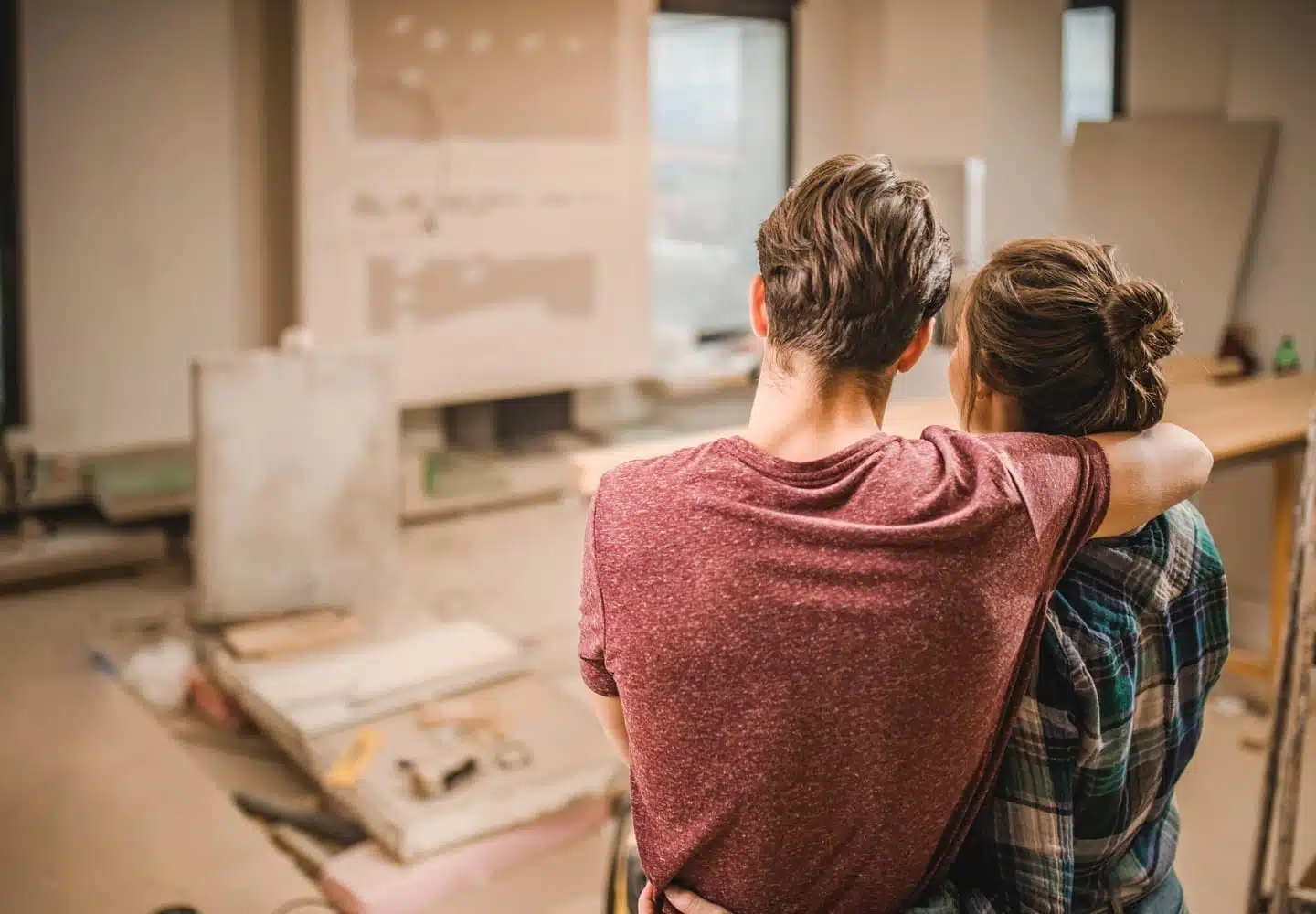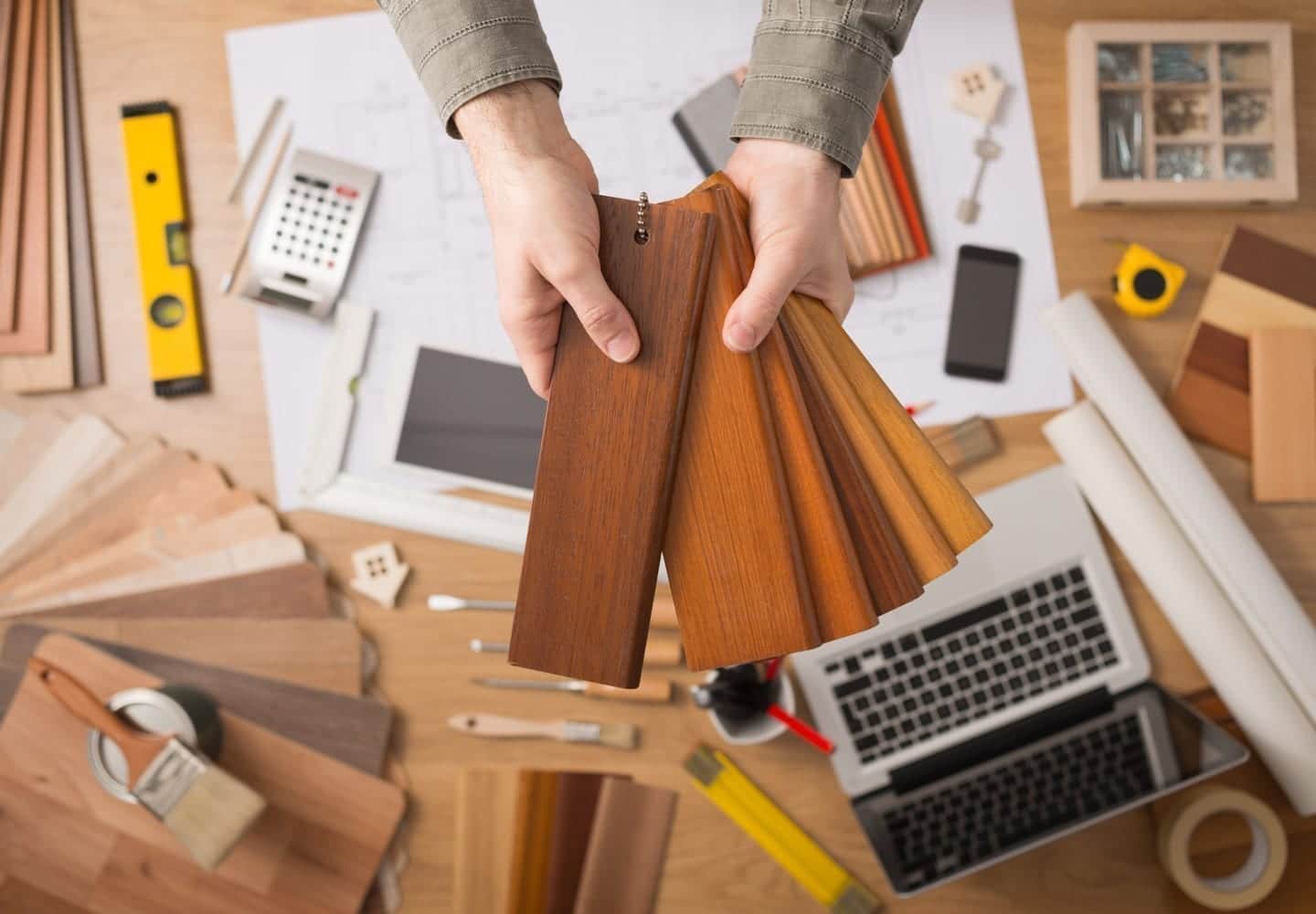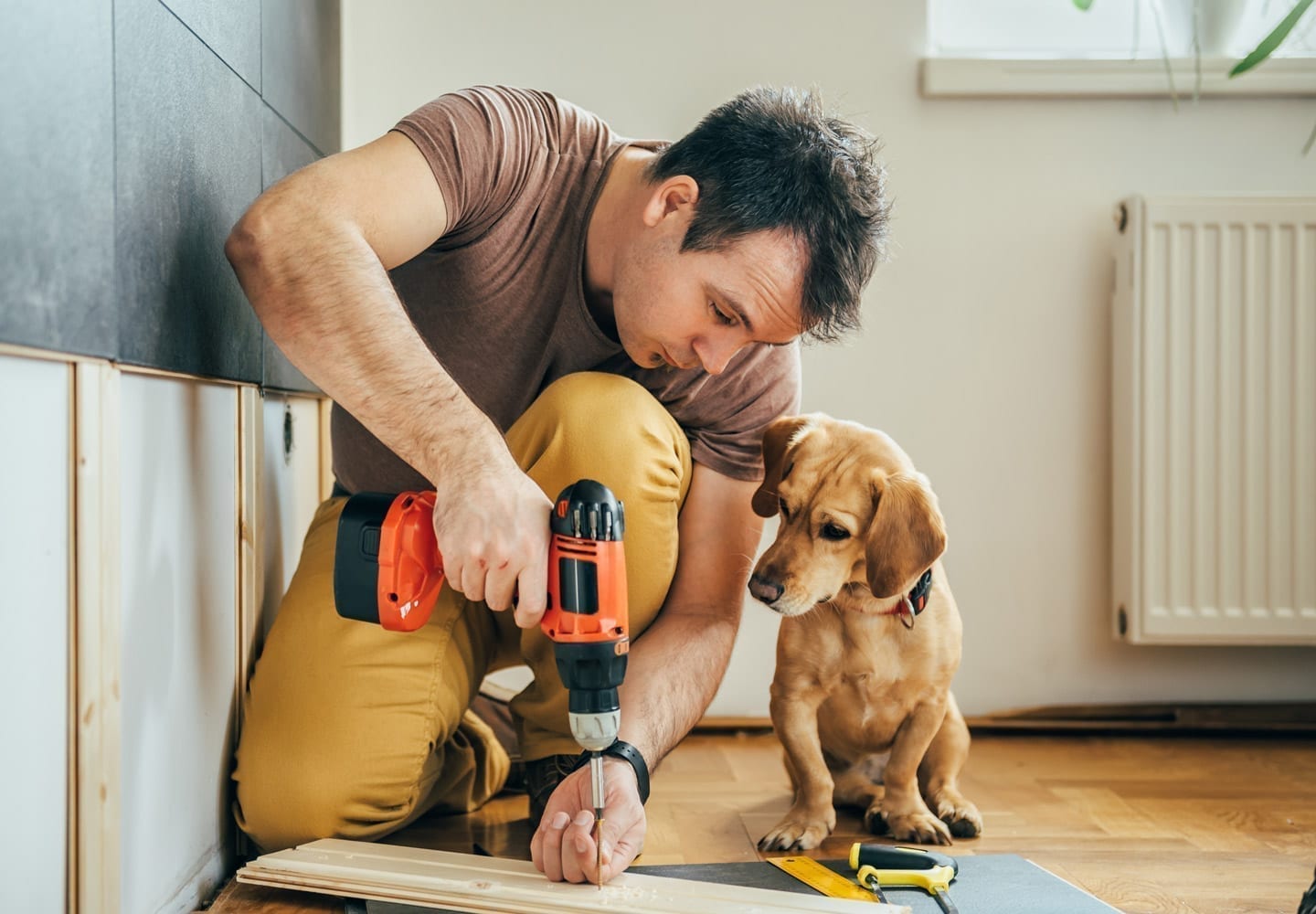
How to Survive the Chaos of Remodeling Your New Fixer-Upper
Remodeling and Renovation Tips
Considering today’s crazy real estate market, you may have ended up buying a fixer-upper, especially if you were buying your first home. Sure, it may not be the home of your dreams, but you’ve got plans. Big plans.
Maybe you’re doing a DIY kitchen remodel, adding space, or upgrading the entire place in a total renovation on an old house. Whatever your plans are, home remodeling projects of any size can feel daunting.
When you’re in the throes of picking out cabinets, fixing broken tile, or matching paint colors, it’s easy to feel like you won’t make it out of your remodel with your sanity intact. But fear not! We’ve got some survival tips to help you get through it.

Decide when and how to tackle your home remodeling
Before you start the fun stuff — hammering and ripping away — it’s imperative to develop a plan for when and how you want to get it all done. (For help covering the bases, check out our remodeling checklist.) Sometimes time and budget constraints dictate breaking down a major home remodel into chunks over a period of time – especially if most of the work will be DIY. But if you just bought your home, this could be the best time to forge ahead and get it all out of the way. In fact, 26% of all renovations or remodeling projects are done by homeowners within the first six months of moving into their new home, according to Houzz industry research. Moreover, the sources for financing remodeling projects are more plentiful than ever. See this helpful financing guide from U.S. News.
Get started by prioritizing the list of projects by placing special attention to which projects could impact the other. For example, it may not be the best idea to replace your flooring right before remodeling the kitchen. As much as you can’t wait to get rid of that hideous vinyl or carpeting, it’s best to save the flooring for last. Remember: Your biggest enemy is unnecessary work.

Set the Stage for Your Remodel
Regardless of whether you do your remodel all at once or in chunks, it’s going to take some time, and that’s why it’s important to get prepared.
Clear the Way for your old house renovation
Are you the kind of person who enjoys protecting your belongings from accidents, spilled paint, drywall, scraping, and debris? So are we. That's why we recommend packing up and moving your household items out of the remodeling danger zone. Approach it like you’re moving out and use this handy storage checklist. Pack what you won’t need in boxes and store those along with good furniture in a portable storage container or your garage. If you don't have extra storage space on your property, a portable storage container is great because you can keep your belongings close and safe with 24-7 access right in your driveway.
Or maybe you’re lucky, and you haven’t even moved in yet. In that case, the smartest strategy is to use the portable container to move in gradually, leaving most of your stuff out of the way and protected from damage while the work proceeds. When it’s all over, your things are right there, ready to move in to your beautiful newly remodeled home.
Make room for materials and equipment
Where are you going to put all that tile or wood the home improvement store just delivered? If you have an empty two-car garage, that’s no big deal. But if your garage is already full or that’s one of the “extras” you had to sacrifice when you bought your fixer-upper, then you may need to consider another option. It’s nearly impossible to time deliveries for materials, appliances, and rental equipment exactly right during a remodel, but you can’t exactly leave the stuff sitting outside exposed to the elements. As you might have guessed, keeping a portable storage container in your driveway for a month or two may be just the solution you need.
Section off renovation zones
Hello, college dorm room, long time no see! Throughout the remodeling process you’ll likely be living in only small sections of your house. The unaffected spaces will need to be creatively utilized. If your kitchen is being redone, create a mini-kitchen in an empty area. If your living room is getting the update, your bedroom might become the TV lounge for the time being. Be sure to stay organized in your temporary space by labeling bins and drawers, so you don’t need to be hunting and rummaging through boxes all the time.
Protect belongings from dust and damage
For items you can’t move into storage, make sure you’ve got plenty of old sheets, blankets, or towels for cover. Camping tarps and old tents can come in handy, too. Your contractor may tell you they’ll take care of this, but reality can be another story. The more you can do to protect your belongings and flooring that’s not being replaced, the less clean up and frustration you’ll face.

Create a temporary kitchen
Once construction has begun, you and your family will find life has been altered more than you imagined, especially if your kitchen area is part of the remodel. One of the first steps to remodel a kitchen is to think like you’re going on an extended camping trip and use these tips to set up your mini-kitchen:
- Move your microwave, toaster oven, and coffeemaker to a convenient area with outlets, using extension cords if needed. If you have a laundry room with a sink and a little space, that’s ideal, but you may have to settle for an area that will be least impacted by the construction.
- Use clear plastic storage bins with tight-fitting lids for everything you’ll be keeping on hand to protect it from construction debris. Select just the essentials you need -- coffee and filters, dishes, utensils and cups -- along with a couple of pots and pans if you’ll have access to your stove or be using a hot plate. You might also consider using disposables for this period of time.
- If you have folding TV trays, those are great because they can be tucked away when you’re not using them. You can also get creative with your temporary dinner table. Stack boxes side-by-side and place a piece of plywood, an ironing board, or the lid to a flat storage container on top.
- Hopefully, you’ll still have access to your refrigerator. If not, this may be the time to get that YETI cooler you’ve been lusting after – or borrow one from a friend. You’ll want to keep at least a few things cold, like milk or cream for your coffee. Have we mentioned coffee already? The repetition is intentional. Trust us, you don’t want to face workers or a hard day of labor without your morning cup of jo.
- Finally, make sure you’ve got some healthy, easy-to-make foods on hand so you don’t skip meals and get hangry or rely on junk food. You can keep your mind and body fueled up with these tips for quick and healthy meals and snacks that rely heavily on the many pre-packaged choices at your local grocery store. Avoid getting dehydrated, too, by keeping a supply of bottled water at the ready.
Minimize fumes and other hazards
Have you ever gotten a headache from paint fumes? Imagine what toxins and excessive dust can do to toddlers and pets. Fortunately, non-toxic paint and other materials are widely available in these days of environmental consciousness, so you and your loved ones don’t have to suffer from toxic odors and fumes. If you’re doing the work yourself, make sure to choose zero VOC paints and at least low VOC strippers and stains. Get the lowest VOC you can – zero VOC interior paint is always available now, but you may need to settle for low VOC for some other materials. If you’re working with contractors, put this in writing and double check the cans. This can mean the difference between being able to sleep at home or having to find a place at the last minute.
Still, there will be some hazards you can’t completely eliminate, depending on the process and materials needed. Ask your contractor to warn you when there will be heavy fumes or dust, so you can make plans to be out of the house, especially for children, pets, and anyone with severe allergies, asthma, or other health issues. Make sure you or your contractors set up fans and open windows whenever possible to increase ventilation. Though we don’t like wasting energy, this may be a time when it makes sense to open windows even when the heat or AC is running.

Protect pets and little people
In addition to controlling dust and toxins, consider if you need to make special plans for your kiddos and furry friends. The equipment, noise, and debris can present hazards to wandering toddlers and pets, so keep dangerous areas sectioned off by using baby gates, for starters.
For excessively busy or loud work days, enlist the help of your relatives or close friends to care for children and pets. Play dates and daycare are options for both. Otherwise, try to keep their lives as normal as possible to alleviate stress.
- Take them for walks, to the park, and feed them roughly the same times everyday
- Give love and pats throughout the day
- Try putting on a video or soothing music to distract from the outside activity
- Squishy pillows and new toys make great sorry-for-the-commotion gifts
Know When to Leave
All of these tips are designed to help you stay at home while you’re remodeling. But as we’ve mentioned, there may be times when you need to get out for a night or two so you can sleep without breathing fumes. Projects can also morph and veer off track, so you might want to consider a hotel or Airbnb until the power is back on or that unexpected piping issue is fixed.
Here are some easy options:
- Use Hotel Tonight to find deals on last-minute reservations in an emergency.
- Find reliable accommodations for short or extended stays on Hotels.com, Airbnb, or Kayak.
- Crash with someone else. If you’re lucky enough to have family or close friends nearby, reach out and offer to treat them to dinner in exchange.
Don’t Stress Too Much
The one constant with any remodel is that something will go wrong. Timetables might slip. You may take on more than you can handle at first. You’ll likely go over budget. But if you take the right steps from the beginning to protect your possessions, your family -- and your sanity -- then you’ll survive the remodel and come out all the better for it. Remember to keep visualizing the results and trust that when it’s all finished, you and your family will be enjoying your new and improved home for years to come.
Related Articles
Comments
Leave a Comment
Your email address will not be published. Required fields are marked *
